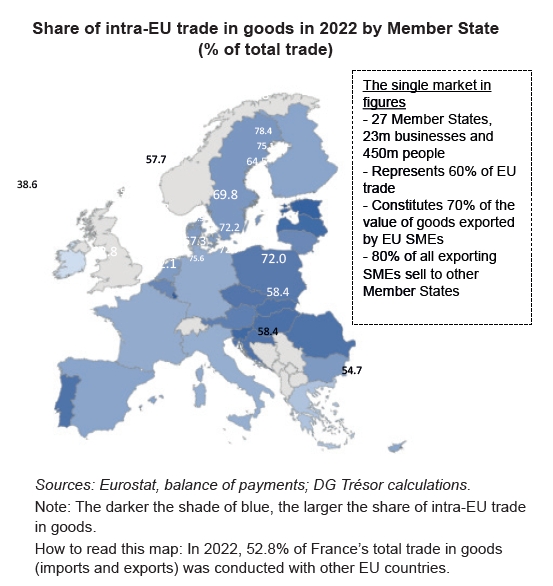The EU Single Market, a Driver for Economic and Trade Integration
The single market is the world’s largest developed market, in which Member States enjoy close economic relations. The market has helped to promote innovation and ramp up productivity and GDP, as well as bring convergence within the European Union. The single market has not led to increased relative specialisation of EU Member States. In the period from 1984 to 2019, their goods’ export structures have become more similar.
The single market plays a central role in European integration, and its purpose is to ensure the political stability and economic prosperity of its Member States. As of 2023, the market included 27 countries, 23 million businesses and nearly 450 million people, making it the world’s largest developed market. Within this market, economic and financial relations between Member States are very close (see Map on this page).
The EU single market has met its initial expectations, promoting innovation, boosting productivity and enabling convergence in the European Union (EU). The strengthened internal economic relations and economic convergence made possible by the single market have helped significantly raise incomes and the standards of living in EU Member States.
Between 1984 and 2019, EU economies’ goods export structures have become more similar, most likely reflecting the development of intra-industry trade. The single market has therefore not led to increased relative specialisation within the EU, where each Member State would have specialised in different sectors.
